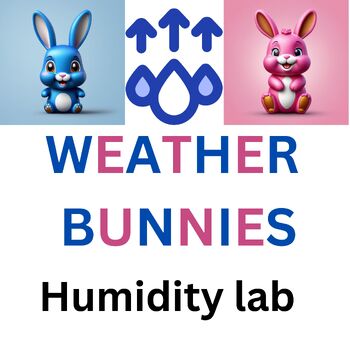Weather Bunnies Lab Hydrated Ionic Compounds to measure Humidity
- Word Document File
Description
This laboratory experiment offers an engaging educational opportunity to instruct students on the practical applications of hydrated and anhydrous Cobalt Chloride in measuring humidity levels.
Aligned with the MS-ESS2-5 standard, the "Determining Relative Humidity (Weather Inquiry)" lab for middle school students seamlessly integrates chemistry concepts with meteorological phenomena.
The detailed lesson plan provides comprehensive guidance, including a step-by-step procedure and a thorough answer key.
Students will witness firsthand the correlation between humidity levels and the color changes of Cobalt Chloride, fostering a deeper understanding of the interconnectedness between chemistry and meteorology.
Moreover, the experiment facilitates the development of scientific skills by prompting students to engage in processes such as data organization, analysis, evaluation, inference-making, and trend prediction during laboratory and field investigations.





